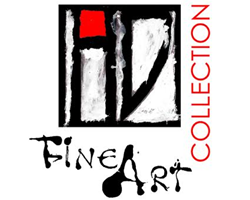Product Description
Harold Christopher Davies, “Pacific seascape”, Oil on canvas c. 1915


HAROLD CHRISTOPHER DAVIES (1891 – 1976) USA
Pacific seascape c.1915
Oil on canvas
Marks: HHG #4010, Hoover Gallery, 1681 Folson Street, San Francisco, CA 94103 (on wooden stretcher), the estate mark of the Harold Christopher Davies estate is on the reverse of the canvas
Exhibited: Hoover Gallery, San Francisco, CA, 1975
For more information: Harold Christopher Davies 1891-1976: A Retrospective Exhibition (Stockton, CA: The Haggin Museum, 1982); Susan Landauer: The San Francisco School of Abstract Expressionism (Berkeley/Los Angeles, CA and London, UK: University of California Press, Laguna Beach, CA: Laguna Art Museum, 1996)p. 8;Art in the San Francisco Bay Area 1945-1980: An Illustrated History (Berkeley, CA: University California Press, 1985)
H: 16” x W: 20”
Framed: H: 27 11/16” x W: 23 5/8”
Born in Seattle, WA on May 26, 1891, the Davies family moved to Cherrydale, VA when Harold was an infant. Davies began his formal art education at the age of fourteen, enrolling in the Corcoran Art Institute in Washington, D.C. Later he continued his studies at the San Francisco Institute of Art.
The talent of Harold Christopher Davies was evident in his early California Impressionist landscapes such as this Pacific Ocean seascape which demonstrates his remarkable use of color and the bravura of his brushstrokes. An Abstract Expressionist, his later works are similar to those of De Kooning and Hans Hofmann. Harold Christopher Davies was a member of the Oakland Art League, the San Francisco Art Association and the Huntsville (Ala.) Art Association.
After living in a variety of cities around the United States, Davies moved to Inverness, California in 1969 where he was free to devote all his time to his art.
Exhibitions:
San Francisco Art Association, 1921-1931
Oakland Art Gallery, 1931
Birmingham Museum, 1951
Southampton Museum, 1959
University of Long Island Museum, 1964
Parrish Art Museum, 1964, 1966, 1967
Hoover Gallery (San Francisco), 1975
Fresno Art Center, 1976 (Solo)
Haggin Museum, 1982
Huntsville Museum, 1982
Harold Christopher Davies, “Pacific seascape”, Oil on canvas c. 1915
FLAVIO POLI (1900-1984) Italy
SEGUSO VETRI D’ARTE Italy
Bottle with stopper c. 1950’s
Spectacular large decanter or bottle with stopper with a golden cognac cased glass interior tear drop form suspended in a solid clear glass body by FLAVIO POLI (1900-1984) Italy for SEGUSO VETRI D’ARTE Italy
H: 16 1/2″
Price: $4,200
PIERRE BOUCHER (1908-2000) France
Propeller 1935
Signed: WB – 7252; Photo Pierre Boucher (ink stamp); DBoucher (ink signature)
Provenance: Gene Prakapas Gallery, New York, 1978.
H: 7 1/16” x W: 9 ¼” (unframed)
H: 14 11/16” x 16 11/16” (framed)
Pierre Boucher came to photography as a result of the Nouvelle Vision and he explored photography as an experiment on all levels, photograms, collages, solarization and superimposition. He had a natural curiosity and a cultivated and sporty demeanor that led him to produce work as diverse as surrealist nudes and well-constructed advertisements. Whether it be in documentary photography or industrial photography, Pierre Boucher always awakens an empathy and a feeling of closeness with his subjects in the spectator.
Pierre Boucher got his start in advertising, taking his inspiration from the graphic techniques of the modernists in the field and contributing to the transformation of the advertising photo into a work of art. He used photomontage to make his work more striking and effective, making unnerving and astonishing.
Boucher’s nudes, on the other hand, use no technical prowess whatsoever. After the war the movement for freedom of the body led him to reconsider social models. Pierre Boucher revisited the female and male nude from several angles. Around 1931, he did his first nude photos under the umbrella of the “ New Objectivity ” : the image was boxed, the frame strict, the bodies freed from their faces. From 1933 onwards his nudes became surrealist inspired by the work of Man Ray. He then moved on to neo-classical nudes. In studio or in natural light his Apollonian nude aimed above all for beauty and harmony.
